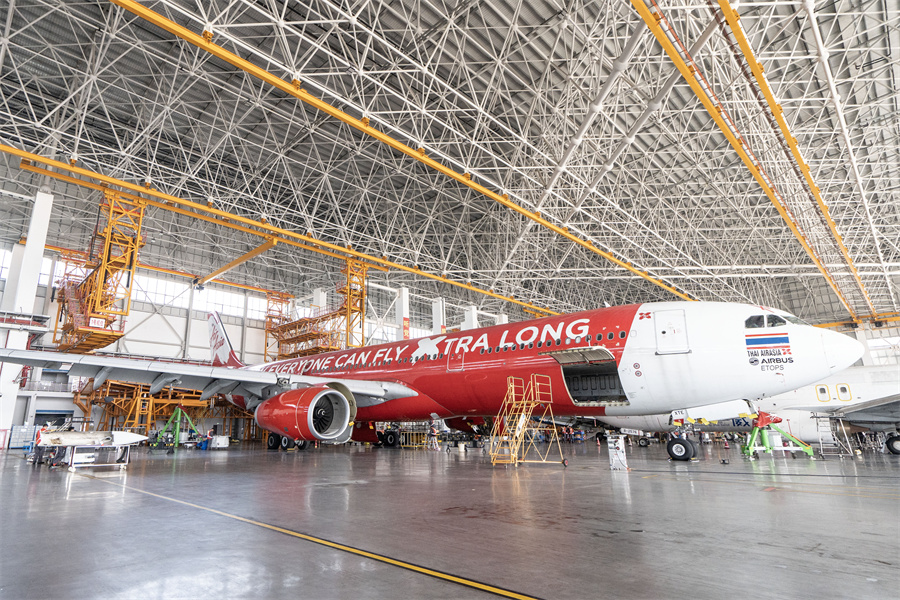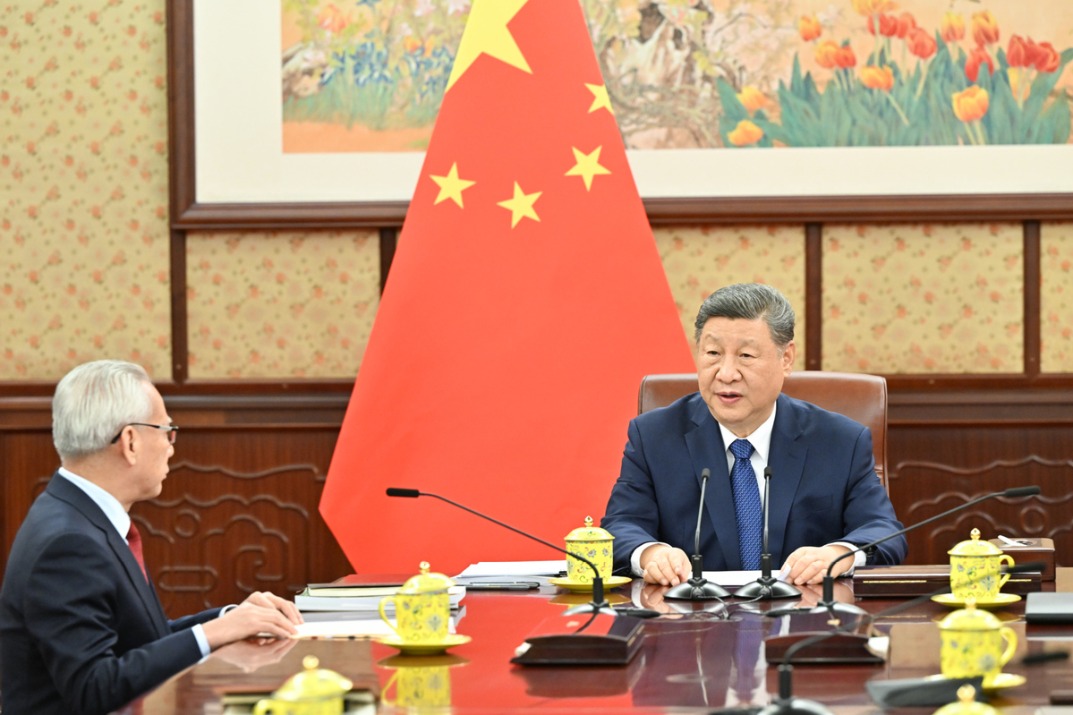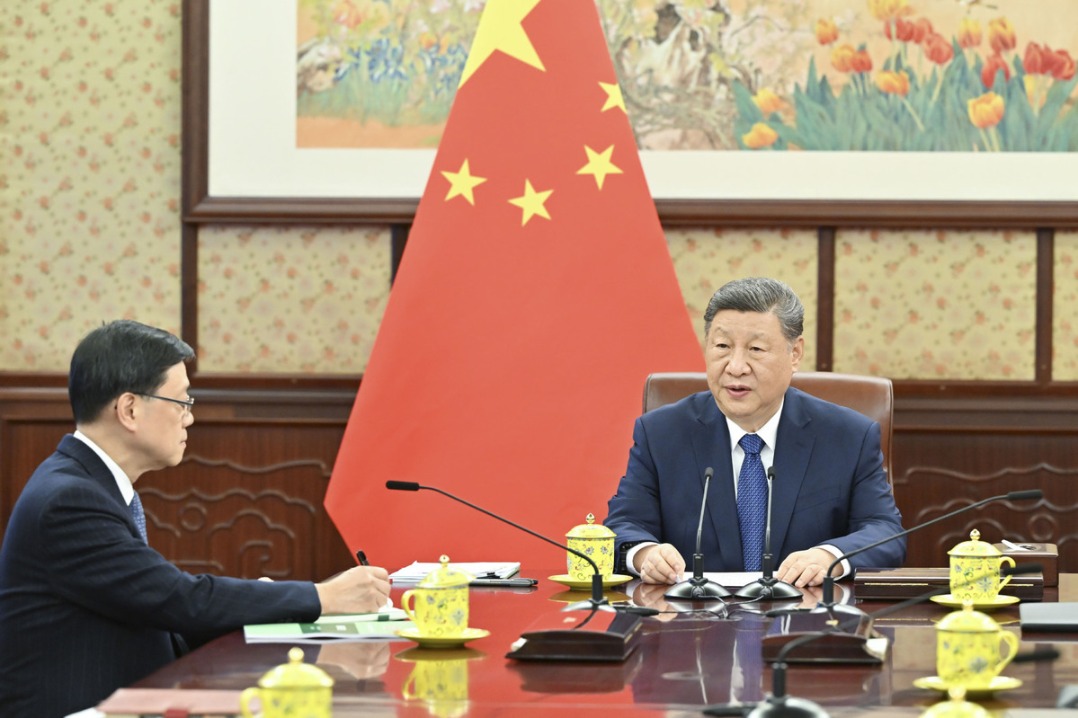Hainan proves open gateway for investment
Island province to serve as linchpin for cross-regional collaboration and supply-chain resilience amid current unstable global trade environment


As the first light of dawn bathes the shimmering shore of Hainan Free Trade Port, a vibrant tapestry of China's opening-up unfolds.
In Boao's gleaming hospital buildings, physicians administer cutting-edge therapies under special regulatory permits; in Lingshui's seaside course, international students enjoy leisure time with their Chinese counterparts; and at Haikou's maintenance base, zero-tariff policies power aircraft overhauls that span half the globe.
"China's openness is astonishing," said a patient from Greece.
Visiting the Boao Lecheng International Medical Tourism Pilot Zone for a second time to receive a newly approved glioma-targeting therapy, he said he's lucky to see the drug — which was launched in the United States in August — become available in Hainan by November.
Upon learning that a new drug is capable of replacing chemo-radiation and effectively delaying recurrence, he immediately contacted relatives in the US and Greece to buy the drug — only to find it prohibitively expensive in the former and not yet available in the latter.
To his great surprise, the treatment had already made its "Asia first use" at West China Medical Center, Sichuan University's Lecheng unit, in November.
At the heart of this quick access to foreign medicine is Lecheng's successful implementation of four "special permits" for medical practice, research, operation and international exchange, which are designed to fast-track breakthrough drugs and devices into the Chinese market.
"Lecheng has now achieved 'three-way synchronization', aligning its medical technology, equipment and pharmaceuticals with leading international standards," said Zhang Yanning, an official at the medical pilot zone's management bureau. "It has become a 'city of hope' for patients with rare diseases and complex conditions in search of new drugs, devices and therapies," Zhang said.
According to the management bureau's data, Lecheng has to date imported over 470 innovative medicines and devices not yet approved on the mainland, benefiting more than 110,000 patient visits, an annual increase of 134.2 percent over the past five years.
Partnerships now span over 180 pharmaceutical and med-tech companies from 20 countries, including leading players like Merck, Sonova, Gilead Sciences and Novartis.
Beyond cutting-edge care, Lecheng is also crafting a holistic "medical tourism" experience. Twenty bespoke packages cater to both domestic and international guests, blending health checkups, convalescence programs and leisure activities against the lush backdrop of Boao's tropical coastline.
Visitors from Southeast Asia, Central Asia, the Middle East and Europe are increasingly drawn to this fusion of healing and hospitality — an unfolding tableau of what a "community of shared health destiny" promises.
"This journey made me feel how close China is to Indonesia," said an Indonesian tourist on a medical visit to Lecheng. "The hospital felt more like a spa-like resort, with impeccable service and very reasonable prices," she said.
In 2024 alone, Lecheng welcomed 413,700 medical tourists, up 36.8 percent year-on-year, with international groups spending an average of over 12,000 yuan ($1,640) per person, according to the management bureau's data. Ancillary sectors such as health checkups, medical aesthetics and rehabilitation have likewise prospered, testifying to the zone's ripple effect on the local economy.
Not far down south on the island, the Lingshui Li'an international education innovation pilot zone is also dismantling walls — here, the ethos is "campus without fences, classrooms without barriers, research without borders".
"Compared to studying abroad, studying in Hainan allows us to 'enroll in one university and select courses from many'," said Li Ningrui, a communications engineering student at Glasgow College Hainan, established jointly by University of Electronic Science and Technology of China and University of Glasgow.
Li added that after graduation, he would be able to earn bachelor's degrees from both universities, which will offer him an edge in seeking higher educational experiences.
Since implementation of the regulations on Lingshui Li'an international education innovation pilot zone on Jan 1, eight Sino-foreign cooperative programs and 22 worldwide leading universities have taken root.
The regulations stipulate support for Sino-foreign joint educational ventures within the pilot zone, while permitting top-tier foreign universities and vocational schools to found institutions and allowing foreign enterprises to establish wholly foreign-owned schools.
"Foreign institutions can teach independently or partner with local universities, making 'study in Hainan equals study abroad' a reality," said Wang Yang, deputy director of the educational pilot zone's management bureau.

The document also encourages unlimited recruitment of international students and facilitates services for international students, foreign professionals and visiting scholars in the zone.
According to the latest data from the pilot zone's administrative authority, international students now account for over 10 percent of the total student population.
In a different facet of openness, an aircraft maintenance industrial base in Haikou is gaining traction among global customers in aviation services.
"Previously, our engines had to be shipped to the UK or Taiwan province for overhaul," said Niu Xuqiang, an executive at an aviation engine maintenance company. "Now, zero-tariff imports of spare parts and tools allow global airlines to save substantially on maintenance and logistics."
Benefiting from its strategic location — within a four-hour flight radius of about half the world's population — the base has obtained 22 aviation maintenance licenses from 17 countries, while the Hainan FTP's zero-tariff policy has also given it a competitive edge by reducing maintenance costs by 15 percent, said Wang Haiye, director and general manager of the one-stop aircraft maintenance industrial base.
This year's Government Work Report called for actively encouraging foreign investment, expanding pilot zones for opening up the services sector, and further opening-up in key areas such as telecommunications, healthcare and education. Notably, this year also marks a pivotal moment for Hainan FTP, as it enters the critical phase of its Customs closure operation and broader opening-up.
Against the backdrop of an unstable global trade environment, the Hainan FTP is increasingly seen as a strategic stronghold in boosting China's domestic consumption momentum and external economic engagement and resilience, said industry experts.
"Despite the profound and complex changes facing economic globalization, regional economic integration and intra-regional trade and investment liberalization remain an overarching trend," said Chi Fulin, president of China Institute for Reform and Development.
"Higher-level openness, positioning Hainan as an open gateway to both the Pacific and Indian Oceans, is both a national strategy and Hainan's historical role," Chi said, adding that as regional economic integration deepens under RCEP and CPTPP, Hainan's port will amplify its capacity to foster trade cooperation and resource pooling.
Ong Chong Yi, executive director of the Belt and Road Initiative Caucus for Asia Pacific in Malaysia, sees Hainan as a platform supported by institutional safeguards to counter protectionism.
"By attracting enterprises to set up units here — then exporting to third-party markets — Hainan can serve as a linchpin for cross-regional collaboration and supply-chain resilience," Ong said.
























